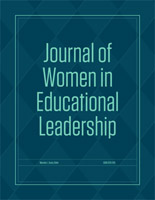Educational Administration, Department of

Journal of Women in Educational Leadership
Date of this Version
1-2007
Document Type
Article
Citation
Journal of Women in Educational Leadership, Vol. 5, No. I - January 2007 ISSN: 1541-6224
Abstract
Using a blend of social constructionism, critical feminism, and dialogue theory, the discourse of nine Manitoba superintendents is examined to determine if it illustrates particular gendered assumptions regarding superintendents' leadership style. Qualitative inquiry and analysis methods were utilized to identify emerging themes, or topics of talk. Six topics of talk emerged in the discourse regarding leadership style. Since "talk is a form of social action worthy of study in itself" (Chase, 1995, p. 25), each of these topics was analyzed to illustrate how men and women in the superintendency in Manitoba negotiate a gendered social action when they talk about leadership.
Introduction
Discussions regarding gender and the superintendency inevitably begin by recognizing the persistence of the disproportionately low representation of women in the superintendency (Brunner, 2004; Glass, Bjork, & Brunner, 2000; Grogan, 2000; Reynolds, 2002; Skrla, 2003; Wallin, 2005). This finding is reflected noticeably in Manitoba, Canada where, during the 2004-2005 school year, only 5 of the 37 public school division chief superintendents were women. Bryant (2004) illustrated this situation by making three points regarding the Manitoba context: (a) since 2001 at the University of Manitoba alone, 66% of the graduates with a Masters in Educational Administration were women; (b) 65% of the teaching staff in Manitoba are women; and (c) 45% of inschool administrators are women. There is no lack of qualified females in the profession to warrant a low representation in the superintendency.


Comments
Copyright © 2007 Pro>Active Publications. Used by permission.